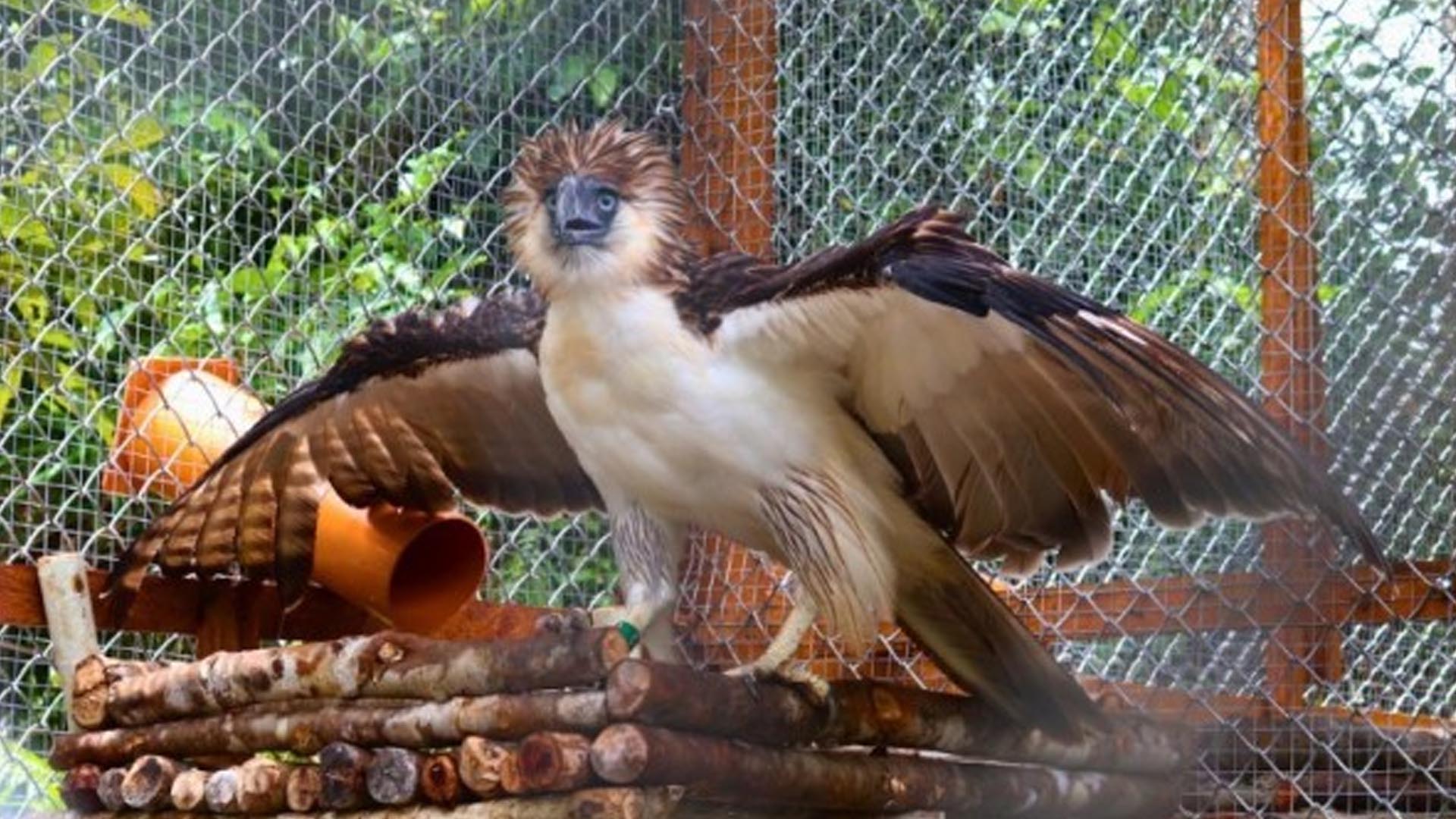Two Philippine Eagles will be released on June 28 in the forest of Burauen, Leyte, as part of an experiment to reintroduce the national bird in “vacant habitats” outside Mindanao Island.
Philippine Eagle Foundation (PEF) Director for Operations Jayson Ibañez said in a phone interview on Thursday that the two rescued eagles named “Uswag” and “Carlito” will be released within the 4,000-hectare Marabong Watershed in remote Kagbana village.
The watershed forms part of the nearly 60,000-hectare Anonang Lobi mountain range, one of the country’s known key biodiversity areas.
“The forest is good, and there are enough food items in the area for the Philippine Eagles. This is a strategy to increase the number of eagles by releasing them into vacant habitats,” Ibañez said.
Six-year-old “Carlito”, which is a female eagle, was rescued as a sick bird in an upland Pangyan village in Trento, Agusan del Sur in March 2022.
He did not give details as to why the female bird was given a masculine name, saying it’s a “long story”.
“Uswag”, a three-year-old male, was rescued after sustaining an injury on Mount Apo in the Davao Region in August 2023.
The two eagles arrived in the village on June 11 and were transported via “Comfort Class” airlift by the Philippine Air Force. They are now in the hack cages, closely monitored by a team of experts deployed by the Davao-based eagle conservation group.
“These temporary cages will help them acclimate to their new surroundings before their release,” Ibañez said.
The PEF and its partners have been preparing the villagers of Kagbana for the past 10 years prior to the repopulation effort.
The foundation said the Eastern Visayas State University (EVSU) Burauen campus was instrumental in initiating communications with the Kagbana community.
The school helped in capacity-building for livelihood activities, a steppingstone for other conservation projects such as reforestation, forest guarding, propagation of culture, and many more.
“These eagles are floaters without territory. They are vulnerable to shooting and trapping. We have done a series education drives to help provide alternative livelihoods. Former hunters are now forest guards, and they abandoned trapping activities in favor of conservation,” he told the Philippine News Agency.
For a year, a team from PEF composed of a full-time biologist, animal keeper, and education officer will stay in Kagbana to monitor the movement and survival of the released birds using a global positioning system tracker.
The foundation identified the mountain range as the new Philippine Eagle Conservation Site, and they’re eyeing the release of 18 eagles, or nine pairs, in the next five years.
“Any rescued eagles in Mindanao will be automatically transferred to Leyte. We will also get healthy young birds and translocate them to Leyte to repopulate the place,” Ibañez said.
The PEF monitored a pair of Philippine Eagles in the forest of Kagbana in 2007, and their presence was detected until 2012.
The official believes that the birds perished when Super Typhoon Yolanda struck central Philippines in 2013.
Kagbana, some 40 kilometers away from the town center of Burauen, is considered the most remote community in Leyte. Prior to the road’s completion last year, people had to hike for several hours to get to the community.
“We hope the release can open opportunities for scientific research that will benefit communities. We want to strengthen the green jobs option in Kagbana, replacing hunting and collecting wildlife,” the official added.
The Philippine Eagle is one of the rarest eagles in the world and one of the largest and most powerful among forest raptors.
They are also listed as critically endangered by the International Union for Conservation of Nature, with an estimated number of only 400 pairs left in the wild.
The conservation efforts in Leyte are in partnership with the Department of Environment and Natural Resources, EVSU, the local government unit of Burauen, the Energy Development Corporation, the Rotary Club of Central Tacloban, the Forest Foundation Philippines, the Insular Life Foundation, and the Australian Embassy in Manila. (PNA)





















